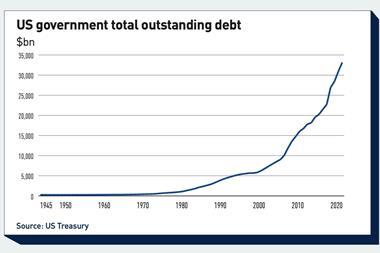December was globally a good month for hedge fund strategies, especially when compared to the disappointing performance in 2004 as a whole. But as shown in table 1, the performance of the different strategies was mixed in December.
While the convertible arbitrage and CTA global strategies fell short of their long-term average performance, equity market neutral funds achieved a performance that was in line with their long-term average return, and event driven and long/short equity funds beat it significantly.
However, it is worth noting that no matter what indicator is used, hedge fund strategies still dominate traditional asset classes significantly over the long term.
The good December performance of event driven (2.60%), long/short Equity (1.64%), and, to a certain extent, equity market neutral (0.72%) can be explained by a very favourable environment. The equity markets posted a positive return (ie, 3.25% for the S&P 500) for the fifth month in a row, with implied volatility remaining at historically low levels (ie, 13.29 for the VIX contract).
On the other hand, the value spread turned negative, benefiting both event driven and long/short equity. Finally, all these strategies were able to take advantage of a narrowing credit spread (ie, -2.90% at 0.67%) and a flattening yield curve (ie, -4.63% at 2.06%).
The only shadow in this bright environment, namely the size spread turning negative, prevented event driven and long/short equity strategies from achieving even better performance.
Again, in spite of rising equity/bond markets and decreasing credit risk, convertible arbitrage funds were not able to compensate for the negative impact of the low level of implied volatility in equity markets. It should be noted that this month’s performance corresponds to the fifth best return for the strategy in 2004.
In December, CTA global was the only strategy in our selection showing negative returns. The factors explaining this poor performance are numerous.
On the one hand, equity markets performed well with implied volatility remaining stable at a particularly low level, while on the other, credit risk reached its lowest level since February 2000. Finally, commodity markets presented a very negative performance (ie, -9.35% for the GSCI) for the second month in a row. (See table 2.)
Mathieu Vaissié is a research engineer with Edhec Risk and Asset Management Research Centre based in Paris
Edhec methodology adopted
We used the Edhec Alternative Indices to measure the performance of hedge fund strategies and their exposure to major risk factors. These indices of indices have the merit of being by construction more representative and more stable than the hedge fund indices available on the market (see www.edhec-risk.com for more details).
However, with hedge fund strategies showing significant extreme risks, we decided to present three risk-adjusted performance indicators taking account of this specific feature. The modified Sharpe ratio, for example, involves replacing the volatility in the denominator of the traditional Sharpe ratio with the modified value-at-risk. The Sortino ratio divides the excess return of an asset over a pre-specified threshold (the minimum acceptable return is equal to 2.5% in our case), by the downside risk of this asset. Finally, the Omega ratio involves dividing the probability weighted average return of an asset over a pre-specified threshold by the probability weighted average return of this asset below the same threshold.
To aid clarity, we only reported correlation coefficients when factors appeared to be significant. These factors were identified as follows. In an attempt to highlight their true economic exposures to risk factors, we first corrected the hedge fund strategies’ historical return series for auto-correlation, following the iterative unsmoothing procedure introduced in Okunev and White (2004). We subsequently regressed hedge fund returns onto every single risk factor, and selected the ones showing coefficients that were significant at a 95% confidence level. We finally calculated the correlation coefficient of hedge fund strategies with the selected factors.












No comments yet